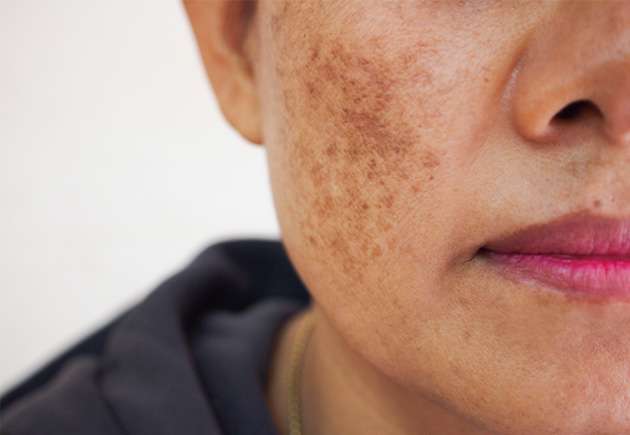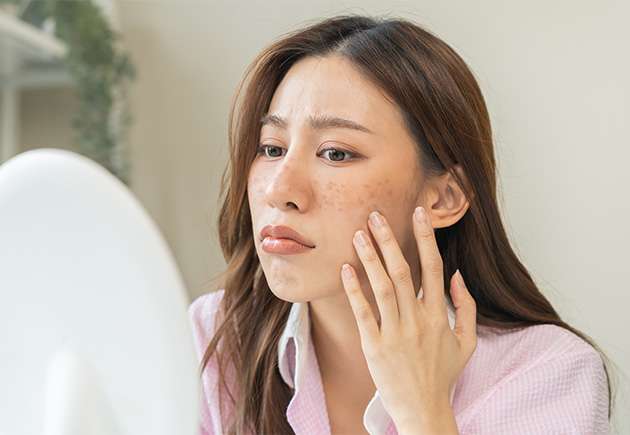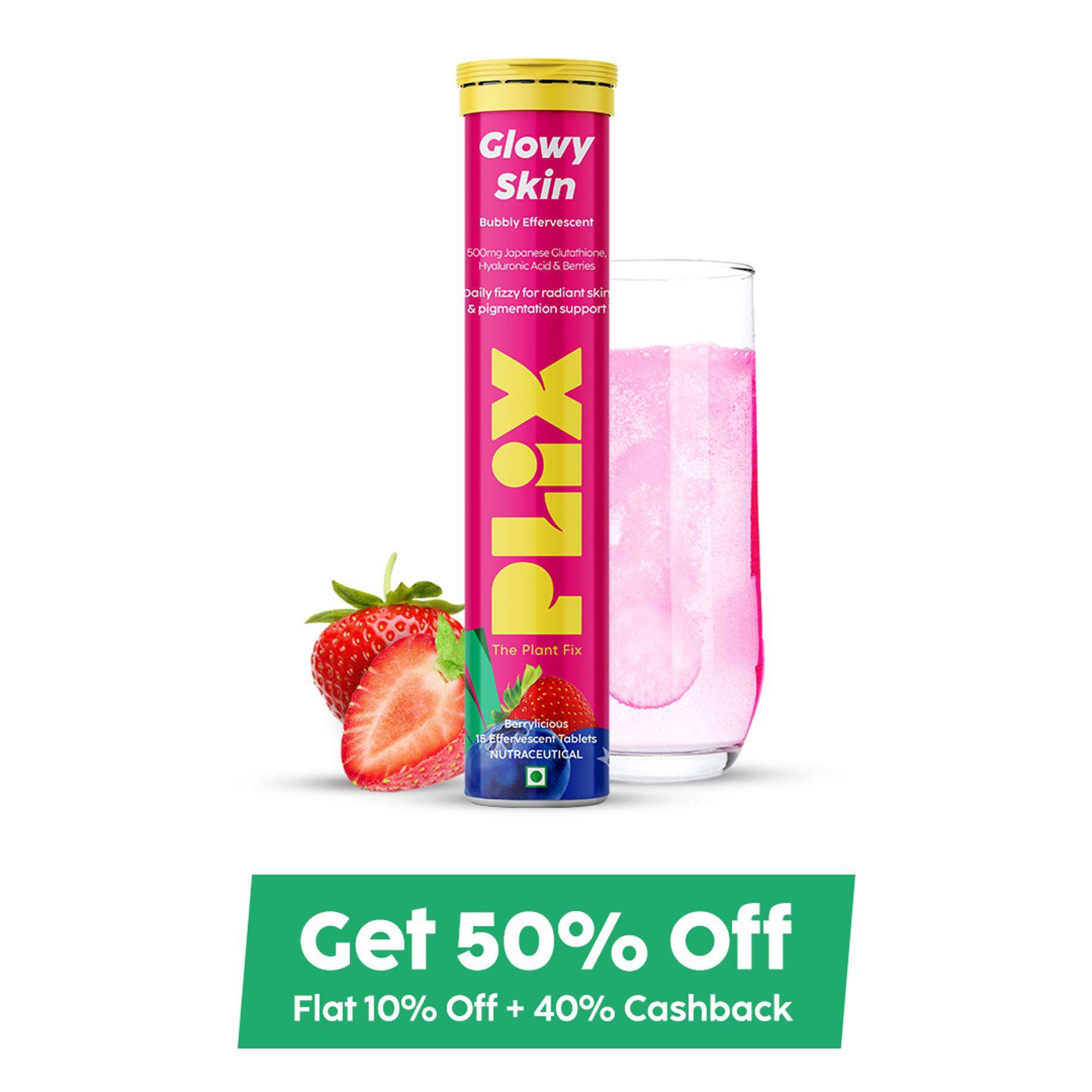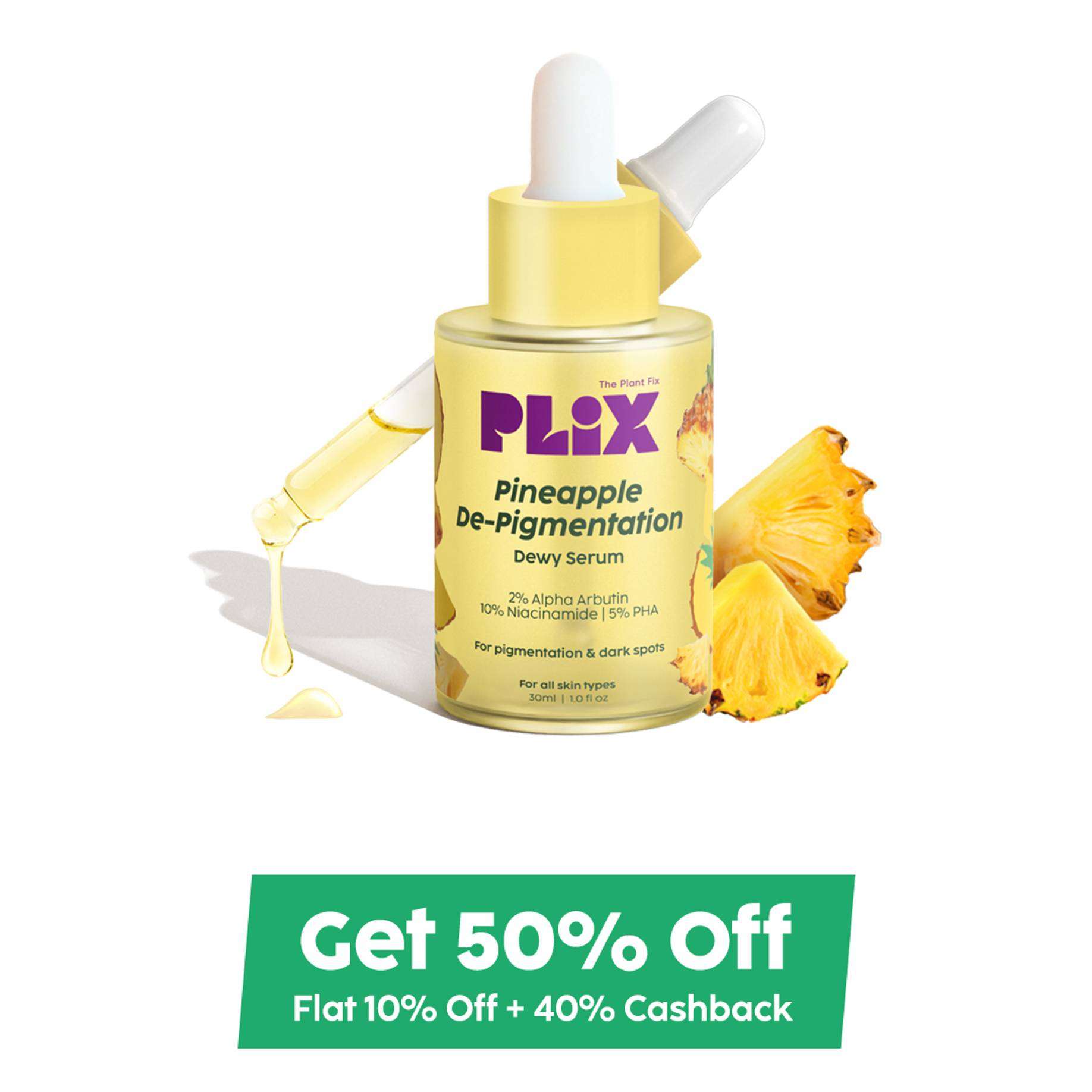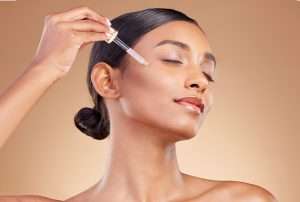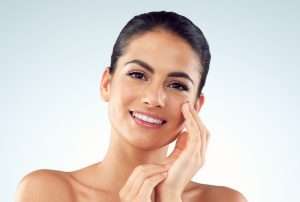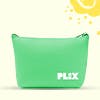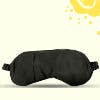What is the Difference Between Acne & Pimples?
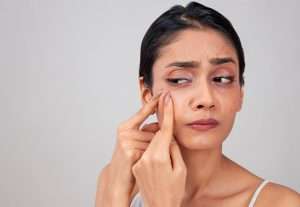
Ah, the woes of dealing with skin troubles – we’ve all been there! Whether you’re a teenager entering the realm of puberty or an adult battling unexpected breakouts, the terms “acne” and “pimples” are probably part of your daily skincare vocabulary. But have you ever wondered if there’s a difference between these two notorious skin issues? In this blog, we’ll delve into the depths of acne and pimple differences, uncovering the distinctions, causes, and types of each. By the time you’re done reading, you’ll be armed with the knowledge to tackle these skin concerns head-on!
Related Product – Niacinamide Moisturizer
Understanding Acne and Pimple Differences
Let’s start with the big one: acne. When we talk about acne, we’re referring to a skin condition that involves a variety of blemishes, including pimples, blackheads, whiteheads, and sometimes even cysts. In essence, acne is like an umbrella term that encompasses different types of skin eruptions. So, when you hear people talking about “acne,” they might actually be referring to any of these blemishes.
Now, let’s zoom in on pimples. Pimples are a specific type of blemish that falls under the acne category. They’re those annoying red bumps that seem to pop up at the worst possible times – right before an important event or a special occasion. While pimples are part of the acne family, they’re not the only members of the clan.
Related Article – Niacinamide For Skin: Benefits, Uses & Top Products
Causes of Acne and Pimples
Now, what’s causing this skin chaos? Acne is primarily triggered by the overproduction of sebum, an oily substance secreted by your skin’s sebaceous glands. Mix this excess sebum with dead skin cells, and you’ve got a recipe for clogged pores. These clogs become breeding grounds for bacteria, leading to inflammation and, you guessed it, those pesky pimples.
Pimples are mainly caused by the same factors that trigger acne, as they are essentially a form of acne. When excess sebum, dead skin cells, and bacteria accumulate in a hair follicle, they create the ideal environment for pimples to form. Hormonal fluctuations, diet, stress, and certain skincare products can also contribute to pimple formation.
Acne and Pimple Differences- Types
Acne comes in various forms, each with its own set of characteristics and challenges. Some common types of acne include:
- Whiteheads: These are small, closed comedones that appear as small, white bumps on the skin.
- Blackheads: These are open comedones that develop when a pore is clogged but remains open. They often have a black or dark appearance.
- Papules: These are small, red bumps that can be tender to the touch.
- Pustules: Pustules are similar to papules but contain pus at their tips, giving them a white or yellowish center.
- Nodules: Nodules are larger, painful bumps that form deep beneath the skin’s surface.
- Cysts: Cysts are the most severe form of acne and appear as large, pus-filled bumps. They can be painful and often leave scars.
Pimples, while being a type of acne, deserve a closer inspection due to their impact on our appearance and confidence. Pimples typically emerge when a hair follicle becomes blocked with excess sebum (oil) and dead skin cells. As the clog builds up, bacteria thrive in the trapped environment, leading to inflammation. This, in turn, causes the familiar redness, swelling, and pus-filled center associated with pimples. Pimples typically exhibit the following symptoms:
- Redness: Pimples are usually red or pink in color.
- Swelling: They are often swollen and raised above the skin’s surface.
- Pus: Pimples have a noticeable white or yellowish pus-filled center.
- Tenderness: Pimples can be tender or painful to the touch.
Acne and Pimple Differences– Key Points
Now that we’ve established the basics of acne vs. pimples, let’s explore the key acne and pimple differences that set them apart:
-
Scope and Complexity:
Acne encompasses a range of blemishes, including pimples, but also includes other types like blackheads, whiteheads, and more. Pimples, however, are a specific kind of acne characterized by inflamed bumps with a central pus-filled core.
-
Severity:
Acne can range from mild to severe, with cystic acne being the most severe form that often results in scarring. Pimples, while also varying in size and intensity, are generally not as extensive as some of the more severe acne types.
-
Appearance:
Pimples usually present themselves as red, swollen bumps with a noticeable white or yellow center. Acne, on the other hand, includes a wider variety of appearances, such as blackheads, whiteheads, and inflamed papules.
-
Location:
While both acne and pimples can occur on the face, chest, back, and shoulders are common areas for acne breakouts. Pimples might be more concentrated on the face due to their formation process.
-
Treatment:
Treating acne and pimples often involves similar strategies, such as keeping the skin clean, using non-comedogenic products, and avoiding excessive touching or picking. However, severe cases of acne might require medical intervention like prescription medications.
Managing Acne Vs. Pimples
Dealing with acne and pimple differences can be frustrating, but there are steps you can take to manage them effectively:
-
Gentle Cleansing:
Cleanse your skin twice a day with a mild, non-comedogenic cleanser to remove excess oil, dirt, and makeup.
-
Avoid Picking:
Resisting the urge to pick at pimples or acne can prevent further inflammation and scarring.
-
Moisturize:
Even oily skin needs hydration. Opt for oil-free, non-comedogenic moisturizers to keep your skin balanced.
Related Article – How To Choose The Right Moisturizer For Skin
-
Over-the-counter products:
Look for products containing ingredients like benzoyl peroxide, salicylic acid, or alpha hydroxy acids, which can help in controlling acne and pimples.
-
Consult a Dermatologist:
If your acne or pimples are severe or persistent, seeking advice from a dermatologist can lead to personalized treatment options.
Additionally, keep an eye on your diet. While chocolate and greasy foods might not directly cause acne, certain diets high in refined sugars and dairy could potentially worsen breakouts for some individuals. Staying hydrated, eating a balanced diet, and managing stress can all contribute to healthier skin.
Introducing the Plix Jamun Niacinamide Moisturizer: The Perfect Solution for Acne and Pimples. This carefully crafted moisturizer combines a blend of ingredients backed by science and infused with love to tackle your skincare concerns. Crafted to combat acne and pimples, this moisturizer is a powerful addition to your daily routine. Within six weeks of consistent use, the Plix Jamun Moisturizer reduces the appearance of acne and pimples. It contains a 2% concentration of Acne Buster sourced from Japan, which combines eight plant-based actives to clear your skin and leave it rejuvenated. Say goodbye to excess oil and shine with this formula that controls oiliness, offering you a matte, balanced complexion. Additionally, it minimizes redness and inflammation, leading to a more even and radiant skin tone. For long-lasting protection against future breakouts, this moisturizer includes 1% Witch Hazel, derived from the Witch Hazel shrub.
Plix Jamun Moisturizer for Active Acne and Pimples is the perfect addition to your skincare routine, especially if you have oily or acne-prone skin. With this moisturizer, you can effectively target active acne, control excess oil, soothe redness, and safeguard your skin against future breakouts. Unveil your skin’s true beauty and regain control of your complexion.
Related Article – Top 10 Benefits of Niacinamide Serum for Skin
Conclusion
In the world of skincare, understanding the acne and pimple difference is crucial to effectively manage your skin’s health. Acne, the broader term, encompasses various blemishes including pimples, which are specific inflamed bumps resulting from clogged pores. By knowing the causes, types & acne and pimple differences, you’re better equipped to make informed decisions about your skincare routine. Remember, taking care of your skin involves patience and consistency, so embrace a holistic approach to achieve that radiant, blemish-free complexion you’re striving for.
Frequently Asked Questions (FAQs)
-
How can I tell if I have acne or just a few pimples?
If you have multiple types of blemishes, including blackheads, whiteheads, and inflamed bumps, it’s likely acne. If you only have red, swollen bumps with pus-filled centers, these are typically pimples.
-
What are the symptoms of acne vs. pimples?
Acne symptoms encompass a range of skin blemishes, including blackheads, whiteheads, red papules, pustules with white or yellow centers, painful nodules, and severe cysts. In contrast, pimples are a type of acne with specific symptoms – they appear as red, swollen bumps with a noticeable white or yellowish pus-filled center, often tender to the touch.
What is the difference between acne vs. pimples?
The primary acne and pimple difference lies in their scope and specificity. Acne is a broad term that encompasses various types of skin blemishes, including blackheads, whiteheads, papules, pustules, nodules, and cysts. It represents a comprehensive skin condition characterized by multiple types of imperfections. Pimples, conversely, are a subtype of acne. They are recognizable by their red, swollen appearance with a central white or yellow pus-filled center. Pimples are a particular kind of blemish within the larger category of acne, often garnering attention due to their conspicuous nature and tenderness.
-
What kills acne and pimples?
Treating and managing acne and pimples involves various approaches. Over-the-counter products with active ingredients like benzoyl peroxide or salicylic acid can help by reducing inflammation, unclogging pores, and killing acne-causing bacteria. Proper skincare practices, including gentle cleansing, can also prevent their formation. In severe cases, a dermatologist may prescribe prescription medications like antibiotics, oral contraceptives, or retinoids to address persistent acne or recurrent pimples effectively.
-
Can my pimples turn into acne?
Pimples themselves are a type of acne lesion. They represent a specific stage within the spectrum of acne. Pimples form when hair follicles become clogged with oil, dead skin cells, and bacteria. If left untreated or if conditions that promote acne persist, pimples may multiply, and other types of acne blemishes such as blackheads, whiteheads, papules, pustules, nodules, or cysts can develop alongside them. So, in essence, pimples are one form of acne and can coexist with other types of acne.
-
Can my pimples leave naturally?
Pimples can resolve naturally over time, especially with proper skin care and hygiene practices. As the inflammation subsides, the pus-filled center may drain, and the pimple can gradually heal. However, it’s essential to avoid picking or squeezing pimples, as this can worsen inflammation and potentially lead to scarring. While some pimples may disappear on their own, others may require targeted treatment to speed up the healing process and minimize scarring or post-inflammatory pigmentation.
-
Will Plix Jamun Moisturizer help to reduce active acne?
Absolutely! Plix Jamun Niacinamide Moisturizer is specially formulated to provide hydration and nourishment to your skin, even if you’re dealing with active acne. Powered by a unique blend of fruit extracts and active ingredients, this formula is designed to combat active acne in multiple ways. It works to inhibit the growth of acne-causing bacteria, control excess sebum production, fade acne marks, and reduce the appearance of spots. Moreover, it enhances your skin’s texture, leaving you with a smoother and clearer complexion.
-
Will the Jamun Moisturizer leave my skin with a greasy or oily look?
Certainly not! The Plix Jamun Niacinamide Moisturizer, designed for active acne and pimples, as well as oily and acne-prone skin, is exceptionally lightweight and swiftly absorbed, ensuring your skin remains non-greasy and devoid of any sticky residue.

